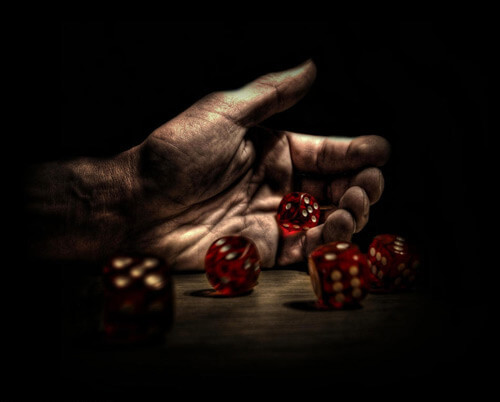Application
The word art makes me feel as if anyone can express themselves. If its through drawing, painting, dancing or even photography, you can escape into your own world and express the way your feeling in that moment. You can also express the side of you that no one else sees. You can be a as creative as you want.
Edward Burtynsky is a Canadian photographer and artist who has achieved international recognition for his large-format photographs of industrial landscapes. Burtynsky's most famous photographs are sweeping views of landscapes altered by industry: mine tailings, quarries, scrap piles. The grand, awe-inspiring beauty of his images is often in tension with the compromised environments they depict.
[Information found on Wikipedia]
Sarah Pickering is a London based, British photographer who graduated from the Royal College of Art with a MA in Photography in 2005. She has been the recipient of several awards including the Photographers Gallery Graduate Award and a Jerwood Award in 2005. Sarah has exhibited internationally and in the UK where her work was part of How We Are: Photographing Britain, at Tate Britain.
[Information found on locusplus.org.uk]
 Michael Wolf is a German contemporary artist and photographer born in 1954. In a diverse array of photographic projects Michael Wolf explores the complex cultural identities of China and Hong Kong, where he has lived since 1995. Wolf delves into subjects such as the formal and improvisational aesthetics of Hong Kong's architectural forms, the often-overlooked human presence at the heart of international industry, and the idiosyncratic ways city-dwellers shape their surroundings in an "organic metropolis."
[Information found on kochgallery.com]
Michael Wolf is a German contemporary artist and photographer born in 1954. In a diverse array of photographic projects Michael Wolf explores the complex cultural identities of China and Hong Kong, where he has lived since 1995. Wolf delves into subjects such as the formal and improvisational aesthetics of Hong Kong's architectural forms, the often-overlooked human presence at the heart of international industry, and the idiosyncratic ways city-dwellers shape their surroundings in an "organic metropolis."
[Information found on kochgallery.com]


-
Santy Ago

-
Alejandro Chaskielberg
Conceptual photography
Conceptual photography often involves use of computer editing, to achieve the desired effects, but a lot of artists are working without the computer, they "put in place" the things and the beings will be the subject of the final photograph, and the placement of those things and beings "build" the concept, the idea, and the final outcome.
The photographers we had seen in the galleries all had different concepts on there pictures. I didn't understand why they took there picture or what they were trying to portray through them. Yet they were very beautiful pieces of work, all showing different meanings and moods.
Context
Art photography contains many different contexts, such as style, texture, quality and many other things. The background of the picture can vary aswell, different people can feel different emotions/feelings from each picture.
Techniques
In art photography the photographer mainly use computer effects to make something seem more surreal then it already is. They manipulate the pictures to create mind games within the picture, make people confused by just looking at it. They can also make the colours on the picture seem more intense or like a painting.
Application

Fashion photography has been popular for over 100 years, one of the first fashion photographers were Adolf de Meyer. He was the very fashion photographer for the American magazine Vogue, he famed for his perfectly elegant picture of women, showng there softness but also caught a glimpse of power within women. He also was famed for his work which dipicted celebrities such as Mary Pickford, Rita Lydig, Luisa Casati, Billie Burke, Irene Castle, John Barrymore, Lillian Gish, Ruth St. Denis, King George V of the United Kingdom, and Queen Mary. 
Ruth Harriet Louise was the first american women to become a professional photographer, from 1925 to 1930 she ran the Metro-Goldwyn-Mayer's portrait studio. When Louise was hired by M.G.M. as chief portrait photographer in the summer of 1925, she was twenty-two years old, and the only woman working as a portrait photographer for the Hollywood studios. In a career that lasted only five years, Louise photographed all the stars, contract players, and many of the hopefuls who passed through the studio's front gates, including Greta Garbo, Lon Chaney, John Gilbert, Joan Crawford, Marion Davies, and Norma Shearer.
Her photographic work also shows the elegance and beauty of women, she shows many emotions with her pictures like anger, happy and also dreamy.
Edward Steichen was an American photographer painter, and art gallery and museum curator.
He was the most frequently featured photographer in Alfred Stieglitz' groundbreaking magazine Camera Work during its run from 1903 to 1917. Steichen also contributed the logo design and a custom typeface to the magazine. In partnership with Steiglitz, Steichen opened the "Little Galleries of the Photo-Secession", which was eventually known as 291, after its address. Steichen work shows the more "dark" side of reality, in his pictures he has made the models portray a "depressed" or "grumpy" emotion. Even when he has photographed a unanimate object like flowers, they are wiltering and look sad.




 - Santy Ago
- Santy Ago - Alejandro Chaskielberg
- Alejandro Chaskielberg







